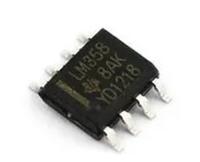Application Notes
PT6460 & PT6470 Series
Output Remote Sense
Operating Features and System Considerations
for the PT6460 & PT6470 Regulator Series
The (+)Sense pin allows the regulator to compensate for
limited amounts of ‘IR’ voltage drop in the positive output
connection resistance. This is the voltage drop incurred
in the PCB trace between Vout (pins 9 & 10) of the regu-
lator and the load some distance away. Connecting (+)Sense
to the positive load terminal improves the voltage regu-
lation at the load, particularly when the load current
fluctuates. Although not recommended, leaving (+)Sense
disconnected will not damage the regulator or the load
circuitry. An internal 10 Ω resistor, connected between
the sense pin and the output, keeps the output voltage in
regulation.
The PT6460 (5-V input) and the PT6470 (3.3-V input)
series of integrated switching regulators (ISRs) provide
step-down voltage conversion for output loads of up to
14 A.
Power up & Soft-Start Timing
Following either the application of a valid input source
voltage, or the removal of a ground signal to the Inhihit*
control pin (with input power applied), the regulator will
initiate a soft-start power up. A soft start slows the rate at
which the output voltage rises and introduces a short time
delay, td (approximately 2 ms), into the power-up sequence.
Figure 1-1 shows the power-up characteristic of a PT6464
(5-V input, 1.8-V output) with a 8.5-A load.
With the sense pin connected, the difference between
the voltage measured between Vout and GND at the
regulator, and that measured from (+)Sense to GND, is
the amount of IR drop being compensated by the regula-
tor. This should be limited to 0.3 V maximum.
Note: The remote sense feature is not designed to compensate
for the forward drop of non-linear or frequency dependent
components that may be placed in series with the converter
output. Examples include OR-ing diodes, filter inductors,
ferrite beads, and fuses. When these components are enclosed
by the remote sense connections they are effectively placed
inside the regulation control loop, which can adversely affect
the stability of the regulator.
Figure 1-1
Vo (1V/Div)
Vin (2V/Div)
Pre-Bias Startup
In complex digital systems an external voltage can some-
times be present at the output of the regulator during
power up. For example, this voltage may be backfed
through a dual-supply logic component such as an FPGA
or ASIC. Another path might be via a clamp diode (to a
lower supply voltage) as part of a power-up sequencing
implementation.
Iin (2A/Div)
td
HORIZ SCALE: 5ms/Div
Although the PT6460 (5-V input) and PT6470 (3.3-V
input) series of regulators will sink current under steady-
state conditions, they will not do so during startup. This
feature allows these regulators to start up while an external
voltage is simultaneously applied to the output. To facilitate
this feature the input voltage must always be greater than
or equal to the output voltage throughout the power-up
and power-down sequence. Startup includes both the
application of a valid input source voltage, or the removal
of a ground signal from the Inhibit* control (pin 1) with
a valid input source applied. The output of the regulator
is also effectively off (tri-state), during the period that
the Inhibit* control is held low.
Over-Current Protection
To protect against load faults, these ISRs incorporate
output over-current protection. Applying a load that
exceeds the over-current threshold (see data sheet speci-
fications) will cause the regulated output to shut down.
Following shutdown the ISR will periodically attempt to
recover by initiating a soft-start power-up. This is often
described as a “hiccup” mode of operation, whereby the
module continues in a cycle of successive shutdown and
power up until the load fault is removed. During this
period, the average current flowing into the fault is
significantly reduced. Once the fault is removed, the
converter automatically recovers and returns to normal
operation.
Note: If the pre-bias is greater than the nominal regulation
voltage, the module will begin sinking current at the end of its
soft-start power-up sequence. This could overstress the regulator if
the current exceeds its rated output.
For technical support and more information, see inside back cover or visit www.ti.com










 LM317T数据手册解读:产品特性、应用、封装与引脚详解
LM317T数据手册解读:产品特性、应用、封装与引脚详解

 一文带你了解?DB3二极管好坏判断、参数信息、替代推荐
一文带你了解?DB3二极管好坏判断、参数信息、替代推荐

 LM358DR数据手册:引脚说明、电气参数及替换型号推荐
LM358DR数据手册:引脚说明、电气参数及替换型号推荐

 OP07CP数据手册解读:引脚信息、电子参数
OP07CP数据手册解读:引脚信息、电子参数
